How to unblock a sink with or without a plunger
Uh-oh, the sink's blocked again. But before you Google 'emergency plumber' read this!

So your sink's blocked? Don't immediately panic, as it could be surprisingly easy to fix. So there's no need to call the professionals just yet, as we think we can get your water flowing freely again in a jiffy. Follow our step-by-step guide on how to unblock a sink and enjoy the satisfaction of a job well done. You'll save yourself some money, too!
From the kitchen sink to the downstairs cloakroom, these handy tips apply to sinks of all styles.
How to unblock a kitchen sink
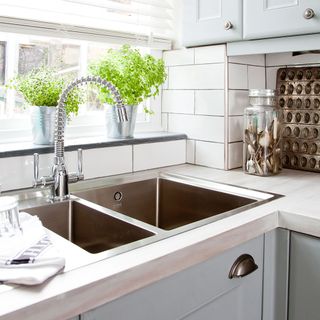
1. Block up the overflow
Create an effective seal by blocking the overflow. It's easiest to do this using a dishcloth or old towel.
2. If you have a plunger, use it now
Place the sink plunger over your plughole, cover with water – this will help you to create an airtight seal – and grip the handle with both hands. Pump up and down to create suction until the blockage is dislodged.
More kitchen tasks tackled: How to clean a dishwasher – plus how to add dishwasher salt and rinse aid
If going at your sink with a plunger isn't working, or you don't have one...
How to unblock a sink without a plunger
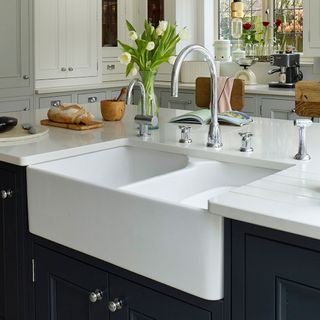
1. Add baking soda and vinegar
This low-cost solution uses two ingredients you're likely to have in your kitchen cupboards – baking soda and vinegar. Add a couple of teaspoons of baking powder, followed by a cup of white vinegar. Bicarb of soda can also be used in place of baking.
2. Try a common hangover cure
Alka-Seltzers are great for mild blockages and nasty smells. Pop a couple down the plughole and then pour in a cup of vinegar. Wait a few minutes and then blast with the hot tap to flush through the blockage.
3. Pour in a little biological washing powder
This is another idea that will leave your sink smelling sweeter. Pop two tablespoons of biological washing powder down the plughole, followed by a kettle's worth of boiling water. This should remove any fats or grease that have built up. Soda crystals are similarly effective.
4. Insert a long wire
Get hold of a long flexible wire tool. Feed it into the drain, so it bends around the pipe and clears what's blocking it. You could buy one or use a straightened wire coat hanger – just be careful of any sharp edges!
Buy now: Drain Cleaner 4.65m, £11.50, Wickes
And if none of those work...
5. Unscrew the U-bend and clear out the blockage by hand
If all that fails, you need to take the U-bend apart. Don’t call a plumber – this job’s easy enough to take on, but do change into some old clothes, because it’s going to get mucky and you'll be working in a very small space. Expect to spend anything up to an hour on it.
Put on a pair of rubber gloves, put down some old towels and slowly unscrew the U-bend or bottletrap using a wrench. It can come in several parts so take a picture first – that way, you'll know how to put it all back together later.
Have a bucket or an kitchen bowl ready to catch any water as you pull it apart, and clear out the pipework. Remember to wash out any dismantled traps or pipework in another sink, bath or using the outside tap – otherwise you’ll end up with wet feet!
How to unblock a bathroom sink
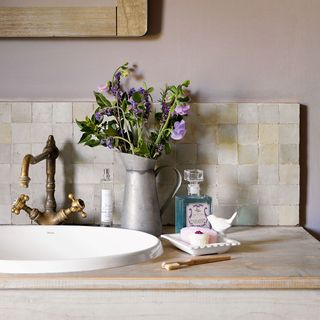
Try the methods above, but we do have a specialist tips for bathroom sinks, which can get clogged with hair.
1. Unblock sink hairs with a magic tool
Rid bathroom drains of pesky hair with the ingenious Drain Weasel tool, which snags and removes hair. insert the wand in the plughole and hold it by the sleeve. Rotate the handle 360 degrees until your feel resistance. Carefully remove and discard the wand, saving the main part for next time.
Buy now: The Drain Weasel 2 disposable plughole cleaning brushes, £8.99, Lakeland
Hopefully that's worked for you. But before we go, here are a few more of your sink unblocking questions, answered.
Trouble in the loo? Follow our guide on How to unblock a toilet
Can bleach unblock a sink?
A combination of bleach and boiling water can break down some type of clog – but it won't eat through hair, for example. We would recommend you try the above methods first, as we think you'll find them more effective and they are certainly less harmful to the environment.
A plumbing expert strongly stresses how careful people should be when working with any chemicals, especially in standing water. If pouring chemicals into a water blockage you are effectively mixing a bowl full of toxic chemicals that could be easier to splash around. Chemical solutions generally work best on drains that are draining, whether they are draining slowly or near completely block but not 100 per cent solid. In the case of a totally solid blockage plunging or taking apart the trap is best.
If you do use bleach to unblock a sink, make sure you read the instructions on the bottle first. Wear gloves and keep your skin covered in case you accidentally splash yourself.
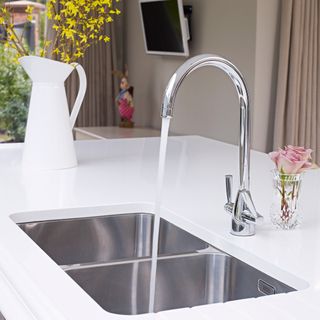
How do I unblock a sink full of water?
If you are using a plunger, the fact that the sink is full of water won't be a problem, since you'll need it there to create an airtight seal (see above). The weight of the water might also act to push the blockage through.
However, if the plunger method doesn't work, you'll need to empty out as much water as possible. Use a saucepan or jug to scoop it out and then pour the water into a bucket. A really clever trick is using an empty water bottle, using the suction method to draw the water up from the blocked sink into the bottle. Then simply squeeze the excess water into another water outlet. After you've reduced the water level then try the other methods of unclogging the sink that we've listed.
Right, time to have a go yourself. Trust us – unclogging the sink yourself really isn't tricky as you think, and you'll save yourself a small fortune!
Get the Ideal Home Newsletter
Sign up to our newsletter for style and decor inspiration, house makeovers, project advice and more.

Amy Cutmore is an experienced interiors editor and writer, who has worked on titles including Ideal Home, Homes & Gardens, LivingEtc, Real Homes, GardeningEtc, Top Ten Reviews and Country Life. And she's a winner of the PPA's Digital Content Leader of the Year. A homes journalist for two decades, she has a strong background in technology and appliances, and has a small portfolio of rental properties, so can offer advice to renters and rentees, alike.
-
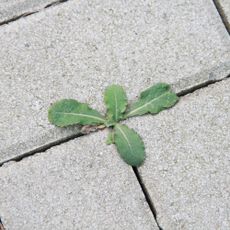 Does salt kill weeds? Absolutely, but gardening experts urge you to take note of these key considerations first
Does salt kill weeds? Absolutely, but gardening experts urge you to take note of these key considerations firstThe most effective way to use it for maximum impact
By Jullia Joson
-
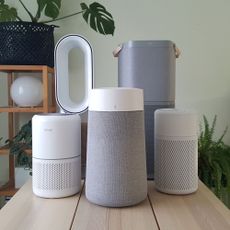 How we test air purifiers at Ideal Home
How we test air purifiers at Ideal HomeWe've put multiple air purifiers through Ideal Home's testing process to find the best-in-class. Here's how we do it.
By Amy Lockwood
-
 Planting ideas for window boxes – 10 ways to make the most of this tiny outdoor space
Planting ideas for window boxes – 10 ways to make the most of this tiny outdoor spaceFrom creating a herb garden to the best smelling blooms to plant, you'll be spoiled for choice
By Ellis Cochrane